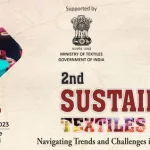 European Trends in Technical and Smart Textiles: A Comprehensive Overview
European Trends in Technical and Smart Textiles: A Comprehensive Overview
The textile industry in Europe is undergoing a significant transformation, driven by technological advancements and changing consumer preferences. This blog explores the latest trends in technical and smart textiles, highlighting key innovations, market growth, and the implications for various sectors.
1. Market Growth and Projections
The European textile market is projected to grow from $258.5 billion in 2023 to $361.6 billion by 2032, with a compound annual growth rate (CAGR) of 3.80% during the forecast period(Europe Textile Industry Statistics: Market Size & Report 2032, n.d.). This growth is fueled by several factors, including:
- Increasing demand for sustainable and eco-friendly textiles: Consumers are becoming more environmentally conscious, leading to a shift towards sustainable materials and production processes(Europe Textile Industry Statistics: Market Size & Report 2032, n.d.).
- Adoption of smart textiles: Innovations in smart textiles that can adapt and respond to environmental conditions are gaining traction(Europe Textile Industry Statistics: Market Size & Report 2032, n.d.).
- Digital printing technologies: The rise of digital printing has enabled customized designs, catering to evolving fashion trends(Europe Textile Industry Statistics: Market Size & Report 2032, n.d.).
2. Innovations in Smart Textiles
2.1. Breakthrough Technologies
Recent advancements in smart textiles have opened new avenues for applications across various sectors, including healthcare, automotive, and fashion. Some notable innovations include:
- Washington State University (WSU) has developed electrically conductive, cotton-like fibers that can be integrated into wearable technology for health monitoring and hazardous exposure detection(The Latest Breakthroughs in Smart Textile Applications • Textilesinside, n.d.).
- MIT’s FibeRobo is a programmable fiber that changes shape in response to temperature, enabling the creation of adaptive performance wear(The Latest Breakthroughs in Smart Textile Applications • Textilesinside, n.d.).
- Researchers at the National University of Singapore have created spider-inspired fibers that are strong, stretchable, and electrically conductive, suitable for applications like interactive gaming gloves(The Latest Breakthroughs in Smart Textile Applications • Textilesinside, n.d.).
2.2. Applications in Healthcare
Smart textiles are increasingly being utilized in healthcare settings. For instance, the University of Waterloo has developed a fabric that responds to heat and electricity, which can be used for self-warming clothing and resilient vehicle bumpers(The Latest Breakthroughs in Smart Textile Applications • Textilesinside, n.d.). These innovations not only enhance patient care but also improve the functionality of medical devices.
3. Sustainability in Textile Production
Sustainability is a critical focus in the European textile industry. The integration of the 4R design concept—repair, recycle, replace, and reduce—aims to minimize environmental impact(The Latest Breakthroughs in Smart Textile Applications • Textilesinside, n.d.). Companies are exploring biofabrication techniques and modular designs to enhance the durability and versatility of textiles(The Latest Breakthroughs in Smart Textile Applications • Textilesinside, n.d.).
3.1. Circular Economy Initiatives
The shift towards a circular economy is evident, with manufacturers adopting practices that promote recycling and the use of renewable materials. This approach not only addresses environmental concerns but also aligns with consumer demand for sustainable products(Europe Textile Industry Statistics: Market Size & Report 2032, n.d.).
4. Key Players in the Smart Textiles Market
The smart textiles market is characterized by the presence of several key players who are driving innovation and market growth. Notable companies include:
| Company Name | Establishment | Headquarters | Website |
|---|---|---|---|
| Adidas AG | 1949 | Herzogenaurach, Germany | adidas-group.com |
| AiQ Smart Clothing Inc. | 2009 | Taiwan | aiqsmartclothing.com |
| Dupont De Nemours Inc. | 2017 | Wilmington, Delaware, USA | dupont.com |
| Google LLC | 1998 | California, USA | about.google |
| Schoeller Textil AG | 1868 | Gallen, Switzerland | schoeller-textiles.com |
These companies are investing heavily in research and development to create innovative products that enhance functionality and performance(Top 13 Smart Textiles Companies in the World, n.d.).
5. Conclusion
The European textile industry is at the forefront of innovation, with significant advancements in technical and smart textiles. The focus on sustainability, coupled with the integration of cutting-edge technologies, is reshaping the market landscape. As consumer preferences continue to evolve, the industry is poised for further growth, driven by the demand for eco-friendly and functional textiles.
 European Trends in Technical and Smart Textiles: A Comprehensive Overview
European Trends in Technical and Smart Textiles: A Comprehensive Overview




